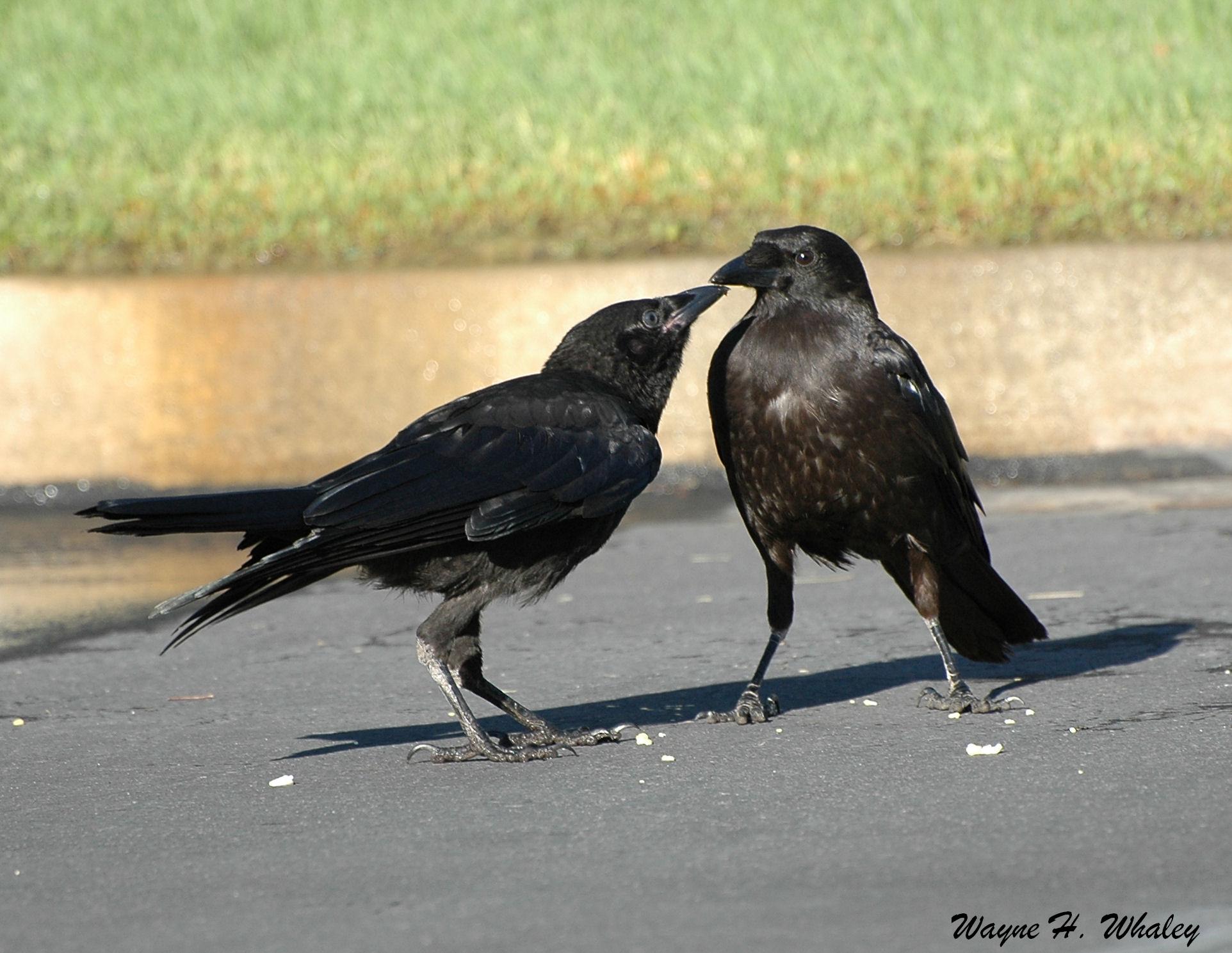
Bryce Canyon National Park
Courtesy US National Park Service
And found on Wikipedia
 American Crow Juvenile & Parent
American Crow Juvenile & Parent
(Corvus brachythynchosby)
Copyright © 2011 Wayne Whaley
 American Crow, Orem, UT
American Crow, Orem, UT
(Corvus brachythynchosby)
Copyright © 2011 Wayne Whaley
 American Crow Pair, Orem, UT
American Crow Pair, Orem, UT
(Corvus brachythynchosby)
Copyright © 2011 Wayne Whaley
Hi I’m Holly Strand.
As you might have guessed, the American crow and the common raven are birds of a feather—two closely related species of the same genus Corvus. Both of them are residents of Utah. Together with family members magpies and jays, crows and ravens are among the brainiest animals on the planet.
Many times I’ve heard someone ask “Is that a crow or a raven?” or “What’s the difference between them?”
Perhaps the easiest way to tell these two apart is by size. If you are thinking to yourself “Wow! That’s a huge crow!” You are probably looking at a raven. Ravens can weigh over 2.5 pounds while crows typically weigh less than 1. The Raven’s wingspan can clear 4.5 feet while that of crows is less than 3. Proportional to their bodies, the bill on a Raven is larger and thicker.
The crow has a thinner, more pointed bill.
Take a look at the tail in flight: a crow tail is fan shaped with a straight tail edge. A raven tail has a rounded wedge shape.
In the air, ravens usually soar, while crows will flap a lot more. It’s not always apparent why, but some ravens will perform acrobatic rolls during flight—usually half rolls, but sometimes full rolls and even double rolls!
Common ravens are abundant throughout Utah, They can be found in almost all habitats and in all seasons. They are more wilderness-oriented than crows who prefer forest edges, savannas, agricultural fields and urbanized areas. In cities and towns humans provide lots of easy food in the form of garbage. The crows’ intelligence allows them to take advantage of novel food items– like pizza and Cheetos–that don’t really resemble food in the wild.
Finally, listen to the difference in sound: Here are two crows calling—an adult and a juvenile https://xeno-canto.org/recording.php?XC=72977 . Now listen to the throatier sound of the raven https://www.xeno-canto.org/america/recording.php?XC=12581
Crows will also scream, rattle, whine and coo, but most of the time they just caw. Ravens have a richer, more complex vocabulary. They’ll scream, trill, knock, croak, cackle, warble, yell, and kaw. Young birds reared in isolation have even been taught to say “Nevermore.”
Thanks to Ryan O’Donnell and Andrew Spencer for their recordings available on the web at www.xeno-canto.org
For Wild About Utah, I’m Holly Strand.
Credits:
Photos: Courtesy US National Parks Service &
Courtesy & Copyright © 2011 Wayne Whaley
Text: Holly Strand
Sources & Additional Reading:
Boarman, William I. and Bernd Heinrich. 1999. Common Raven (Corvus corax), The Birds of North America Online (A. Poole, Ed.). Ithaca: Cornell Lab of Ornithology; Retrieved from the Birds of North America Online: https://bna.birds.cornell.edu/bna/species/476
Kilham, Lawrence. 1989. The American crow and the common raven. W. L. Moody Jr. Natural History Series. College Station: Texas A&M University Press.
Marzluff, John M. 2005. In the company of crows and ravens. Yale University Press.
Savage, Candace Sherk , 1997. Bird brains: the intelligence of crows, ravens, magpies, and jays. Sierra Club Books.
Verbeek, N. A. and C. Caffrey. 2002. American Crow (Corvus brachyrhynchos), The Birds of North America Online (A. Poole, Ed.). Ithaca: Cornell Lab of Ornithology; Retrieved from the Birds of North America Online: https://bna.birds.cornell.edu/bna/species/647
